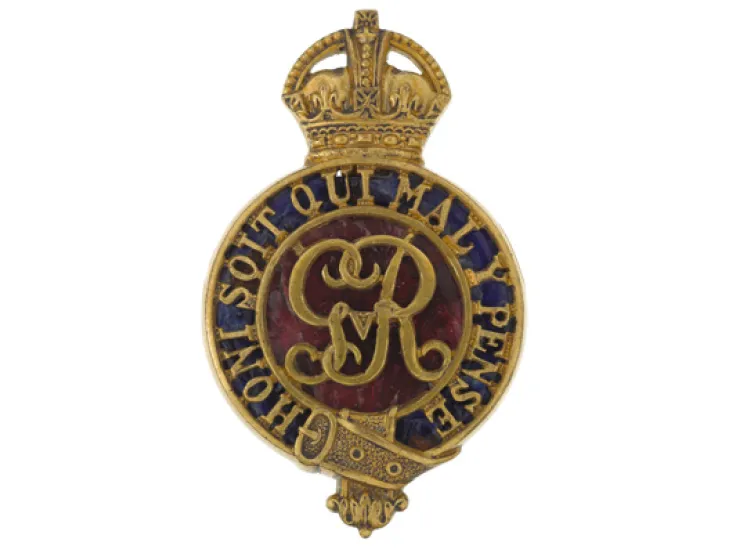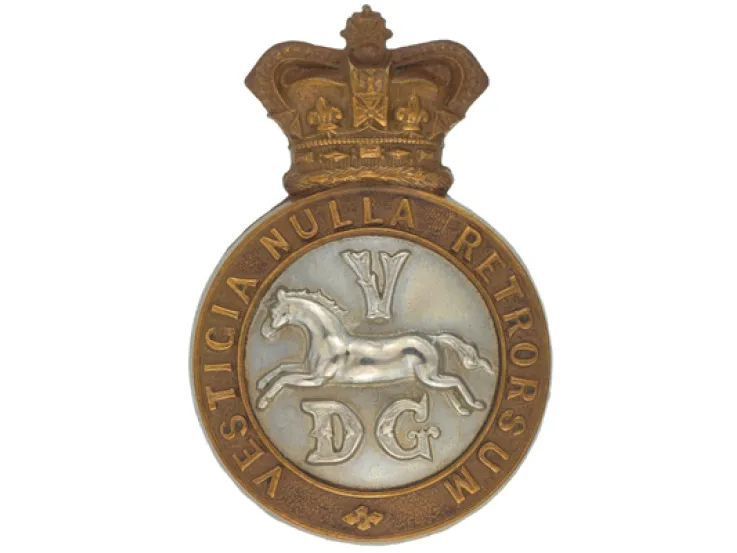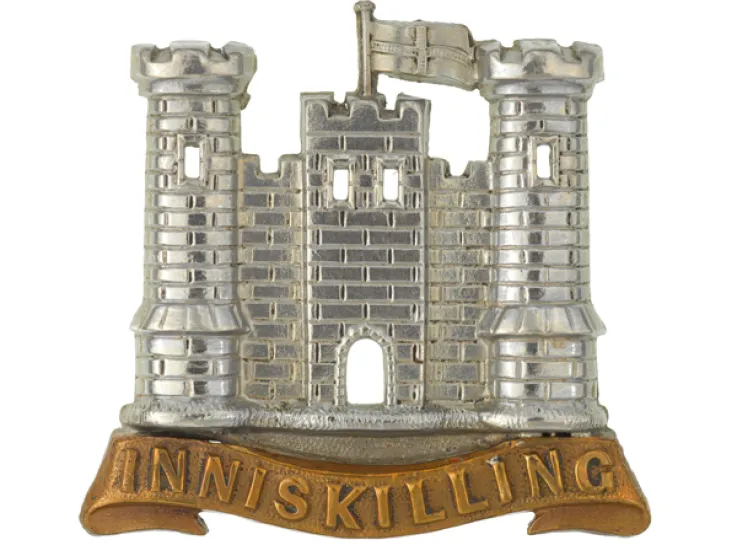Origins
In 1660, Charles II was restored to the English throne. A year later, he raised army units to garrison Tangier (now in Morocco), a new possession he had gained as part of his wife's dowry.
One of these regiments was a single troop raised from cavalry veterans of the Parliamentary Army and known as the Tangier Horse. This was soon expanded to four troops and ranked as the 1st Dragoons, later becoming The King's Own Royal Regiment of Dragoons.
The regiment returned to England in 1684, when it was merged with another three troops and transferred to a mounted infantry role. A year later, it helped crush the Duke of Monmouth's rebellion, an attempt to get rid of Charles's brother and successor, James II.
During the Nine Years War (1689-97), the regiment fought in Ireland against supporters of the now-deposed James II, including the battles of the Boyne and Limerick in 1690. It then deployed to Flanders, fighting at the Siege of Namur in 1695.
18th century
During the War of the Spanish Succession (1702-13), the Royal Regiment of Dragoons fought in Flanders, before moving to Portugal and then Spain. It was captured at Brihuegha in 1710.
In 1715, the regiment deployed to northern Britain to oppose the Jacobites, remaining there until 1720. It spent the next two decades on garrison duties in England.
During the War of the Austrian Succession (1740-48), it captured the standard of the Black Musketeers at Dettingen in 1743. It also fought at Fontenoy (1745), before returning home to face the Jacobites again. In 1751, it was re-titled the 1st (Royal Regiment of Dragoons).
On the outbreak of the Seven Years War (1756-63), the regiment was employed guarding the English coast and raiding French ports. In 1760, it moved to Germany, where it fought at Warburg.
After the war, it remained on home duties in England until 1793, when it joined the Flanders campaign against the French Revolution. The regiment fought at the Siege of Dunkirk (1793), the Battle of Beaumont (1794) and the Battle of Willems (1794). By this period, its main role was as heavy cavalry, rather than mounted infantry.
19th century
In 1809, the unit moved to the Peninsular War (1808-14), helping to cover Wellington's retreat to Torres Vedras (1810) and charging at Fuentes de Onoro the following year. It also fought at Ciudad Rodrigo (1812), Badajoz (1812), Alba de Tormes (1813), Vitoria (1813) and Pamplona (1813).
In 1815, it fought at Waterloo with the Union Brigade. It captured the eagle of the French 105th Line Infantry Regiment there before being counter-attacked by French lancers.
A long period of home service followed until the Crimean War (1854-56), where the regiment charged with the Heavy Brigade at Balaklava in 1854.
The next three decades were spent on garrison duties in England, Ireland and Scotland. During this period, in 1877, the regiment was re-named the 1st (Royal) Dragoons. Then, in 1884, it sent a detachment to the Sudan that fought at Abu Klea (1885).
In 1899, it sailed to South Africa to fight in the Boer War (1899-1902), where it was immediately employed in the relief of Ladysmith.
World Wars
The regiment deployed to the Western Front in 1914 and spent the entire First World War (1914-18) there with 3rd Cavalry Division. It fought in many battles including the First Battle of Ypres (1914), Second Battle of Ypres (1915), Loos (1915), Arras (1917) and Amiens (1918).
It was stationed in England, India, Palestine and Egypt during the inter-war period.
Shortly after the outbreak of the Second World War (1939-45), it became a mechanised unit, joining the Royal Armoured Corps in 1940. It served as an armoured reconnaissance regiment in Syria (1941) and North Africa, where it fought in the Gazala battles and at El Alamein in 1942. It then took part in the Sicily and Italian campaigns in 1943.
The regiment landed in Normandy in July 1944 and ended the war as part of the force which liberated Copenhagen in May 1945.
Quiz
Which of the following was a nickname of the Royal Dragoons?
The nickname was given to the regiment after Captain Alexander Kennedy Clark and Corporal Francis Styles captured a French eagle standard at Waterloo in 1815.
Post-war
The regiment spent the late 1940s in West Germany with the British Army of the Rhine, before returning home in 1950. It deployed troops to Egypt in 1951-54 and then returned to Germany.
It moved to Aden in 1959. The following year, it served in the Malayan Emergency (1948-60).
In 1961, the regiment was re-titled as The Royal Dragoons (1st Dragoons) and spent the rest of the decade in England, Cyprus and Germany.
Legacy
Already the oldest line cavalry unit in the Army, it was promoted to guards status in 1969, when it was amalgamated with The Royal Horse Guards (The Blues) to form The Blues and Royals (Royal Horse Guards and 1st Dragoons).
Regimental museums
The National Army Museum works with a network of Regimental and Corps Museums across the UK to help preserve and share the history and traditions of the Army and its soldiers.
Discover more about The Royal Dragoons (1st Dragoons) by visiting The Household Cavalry Museum in London.













